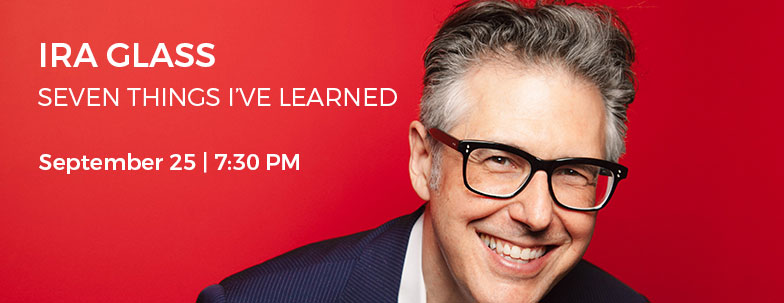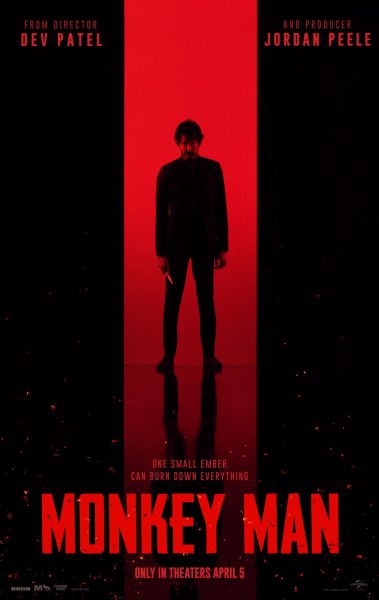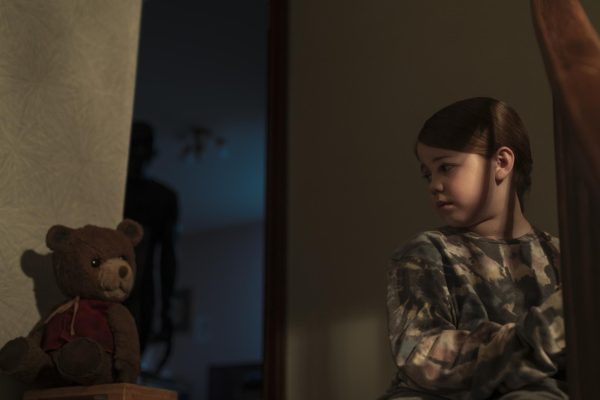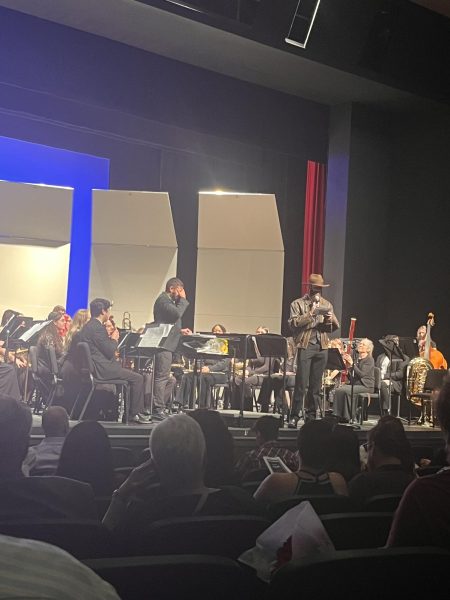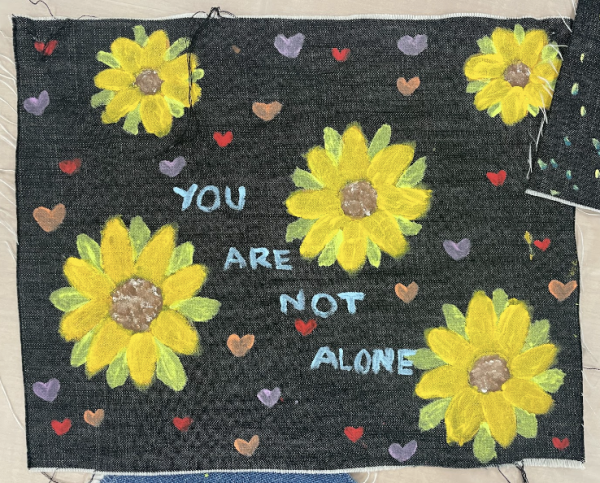Glass lights up Laxson with life lessons
A projection of the numeral 7 greeted the attendees entering Laxson Auditorium. The stage lights remained lit as the projection quickly switched to a cartoonish countdown featuring the newly anthropomorphized friend, 7, making its way down different numbered bathrooms.
7 stumbles through a hallway. It’s denied entrance to each room. It changes its shape and forces itself into a space only to be kicked out. It’s a curved allegory for Ira Glass’ speech entitled, “Seven Things I’ve Learned.” Glass, a 62-year-old journalist with gray sideburns and horn-rimmed glasses, took his position on stage amid an extended applause.
Glass is the host of the award-winning radio program “This American Life,” which draws in a total of 4.8 million weekly listeners across 500 public stations and podcast downloads. Glass’ appearance on Sept. 25, his first live performance since the COVID-19 lockdown, brought nearly 400 people into a lecture about his formative experiences working in broadcast journalism.
As Glass mentions, these seven things are not necessarily the most important lessons of his career, but they are the most entertaining.
The first lesson Glass shared was how to structure a good story. During his presentation and interview with journalism students beforehand, he reminded everyone that he did not start out as a great storyteller. In order to develop that skill, you have to understand the purpose and structure of a narrative, he told the audience.
Glass describes a story as a “spine of events” that is put into motion. A good story covers the beginning, middle and end of an event. A great story is immersive. All stories should focus on people.
Glass tapped the screen from his tablet and began playing an opening segment from “This American Life,” that started off incredibly mundane. Glass’ disembodied voice sets the scene in an office. He introduces the listeners to a man named Joe and the office manager’s 9-year-old daughter. He describes the relationship between these two as good-natured teasing.
One day, Joe, without his glasses, crab walks toward the girl and announces his displeasure at seeing her — only to realize the person he spoke to wasn’t his young friend, but rather an intern with dwarfism who had started the previous week. This episode is titled “Cringe.”
“People stick around for stories you don’t think they’d be interested in because you start it the right way,” Glass said.
Glass stepped away from his lectern for Act Four, “It’s normal to be bad before you’re good.” This act sought to visualize the Oreo story where Glass documented the company on their 75th anniversary.
He animatedly illustrated the factory line process, running from one end to the other and describing different assets and people involved. He was excited to tell this story and the audience was engaged, tickled and eager to hear more. He was painting a picture.
Glass tapped his screen and played the audio from the Oreo story. Monotone and lackadaisical, Glass contrasted the cookie baking process versus the packaging process. Self-admittedly, it lacked all the fervor and energy that he, as an experienced reporter, would come to possess. What was most unfortunate is that Glass was an experienced reporter when writing this story. He had worked at NPR for eight years at this point.
“This is the story where I thought ‘Finally! I know what I’m doing.’ But I was still pretty terrible,” Glass said.
In Act Five, Glass prompts the audience to question one’s creative purpose rather than their background. “How to be invisible” begins with interview footage of John Maloof, who, in 2013, bought boxes of photo negatives from a storage auction.
Maloof discovered thousands of photographs by Vivian Maier, a Chicago nanny who died days before Maloof decided to seek her out. Maier’s work was projected while Glass’s recording narrated her life, highlighting interviews of people she knew.
She was a private woman who documented Chicago’s urban landscape as diary entries. Those who were close to Maier assert that she would hate to learn of her posthumous fame. But toward the end of this story, Glass talked about whether what she wanted really matters.
Like poet Emily Dickinson, Maier was an eccentric fellow artist whose work was kept secret until she died. Glass summarizes our relationships with the dead as inherently misrepresentative. Maier wanted to keep her image private, but now her work has been ripped from obscurity. Her story is a reminder to do and seek out your work for your own sake, not for fame or others.
“It’s funny how the living always kick the asses of the dead,” Glass said. “We misunderstand them and say exactly the opposite … of what they want said.”
IRA GLASS
Glass ended his lecture on Act Seven, “It’s war,” an allusion to the efforts against fact-based journalism. He discussed the nation’s political divide and how we in the public sphere cannot agree on basic facts. Glass tailored this finale around the effects COVID-19 has had on the public’s lives and politics. Our best weapon in this battle of truth is appealing to the emotion and language of the other side.
To illustrate this sentiment, Glass required all attendees to wear face masks and provide proof of vaccination.
Glass pontificated that the “war” on facts and fact-based journalism has raged to the point where folks who have been duped into distrusting COVID facts don’t even trust the politicians who convinced them in the first place.
Glass played a recording of a politically conservative panel questioned by a conservative analyst. When asked to say the first thing that came to mind when cued with a word, the panel’s responses were buzzwords and phrases. “Anthony Fauci” was responded to with “untrustworthy.” “Vaccine” was met with “untested.”
Gov. Chris Christie of New Jersey addressed a group of fellow Republicans who doubted the legitimacy of the COVID vaccine and the virus. His speech specifically resonated with this group because he spoke from an emotional position rather than a political one. Many of the panel’s minds were influenced as a result. In this “war,” the most effective weapon is people’s personal accounts, people’s emotions and by proxy, empathy.
“If you want to move someone, you need facts and emotion,” Glass said.
“This American Life” airs locally Fridays at 5 p.m. PST on KCHO 91.7 and KPFR 88.9 through North State Public Radio.
Michaela Harris and Ian Hilton can be reached at [email protected]. Michaela can also be reached on Twitter at @MichaelaRH21.








